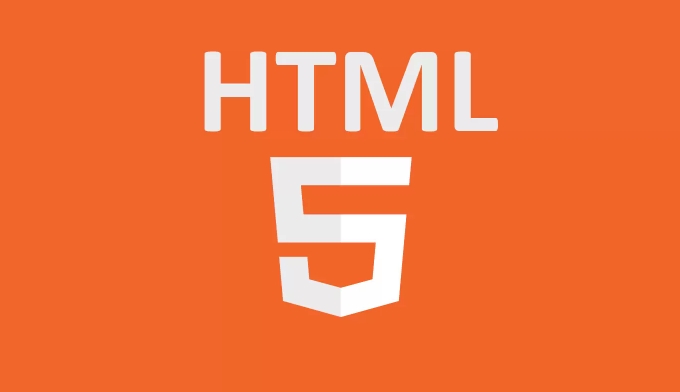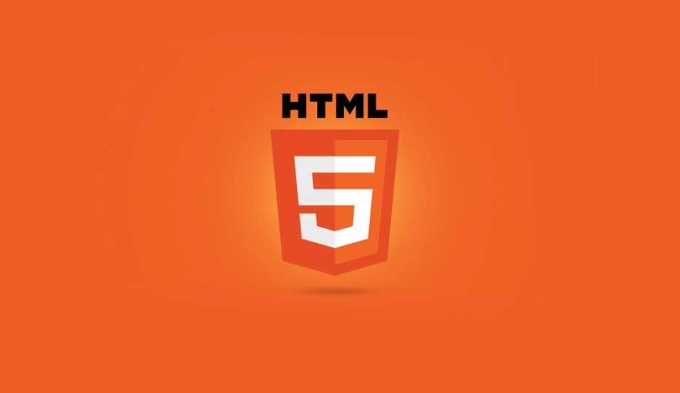Enhancing Security with Content Security Policy (CSP) in HTML
Jul 15, 2025 am 02:43 AMCSP is a mechanism to improve web page security by limiting the source of resource loading. Its core is to set policies through HTTP headers or meta tags, and control the browser to load only scripts, styles and other resources from the specified source to prevent XSS attacks. To configure CSP, you need to set the Content-Security-Policy header, for example, default-src 'self' restricts the default resource source, script-src specifies the script source that is allowed to be loaded, and style-src controls stylesheet loading. Common problems after activation include resource interception, which can be solved through report-uri reporting, Report-Only mode testing, avoiding the use of 'unsafe-inline' and 'unsafe-eval', and debugging in combination with developer tools. In actual applications, you need to pay attention to the limitations of dynamically inserting inline scripts and styles, and third-party resources need to be added to the whitelist. Reasonable planning of strategies can reduce maintenance costs.

CSP (Content Security Policy) is a very practical technology in modern web security, especially in preventing XSS (cross-site scripting attacks). It greatly reduces the risk of malicious code injection by restricting the browser to only load resources from specified sources.

What is CSP?
CSP is an HTTP response header, which can also be set through the HTML <meta> tag. Its core function is to tell the browser which resources can be loaded and executed and which ones should be blocked. For example, you can set that only JavaScript and CSS files are allowed to be loaded from your own server or specific CDN, and other sources are prohibited.
This mechanism is particularly useful, especially on websites where users can submit content. Without CSP, an attacker may inject malicious scripts through comments, forms, etc. and execute them; while with CSP, even if the script is inserted into the page, it will not be executed, thus protecting user data.

How to configure basic CSP policies?
Configuring CSP is mainly done by setting Content-Security-Policy HTTP header. Here is a simple example:
Content-Security-Policy: default-src 'self'; script-src 'self' https://cdn.example.com; style-src 'self' 'unsafe-inline'
The above strategy means:

- All resources can only be loaded from the current domain name by default (
default-src 'self') - The script can be loaded from the current domain name and
https://cdn.example.com(script-src) - Stylesheets allow inline (
'unsafe-inline')
Of course, this is just the basic writing method. In actual use, more fine-grained rules can be defined as needed, such as limiting the source of resources such as images, fonts, and iframes.
FAQs and debugging tips
After enabling CSP, the most common situation is that some resources are accidentally intercepted, resulting in abnormal page functionality. At this time, you can check it through the following methods:
- Use
report-uriorreport-tofield : Report policy violations for easy analysis and repair. - First use
Content-Security-Policy-Report-Onlymode to test : the resource will not be really intercepted, it will only report violations. - Note the risk of using
'unsafe-inline': Although convenient, it will weaken the security of CSP. - Avoid using
eval()andnew Function(): These dynamic code execution methods will also be blocked by CSP unless'unsafe-eval'is used, but this is not recommended.
It is recommended to cooperate with browser developer tools to view the console error information during development, so as to locate problems faster.
Small details in practical applications of CSP
Sometimes, we may encounter some "seemingly reasonable" practices that do not actually comply with CSP specifications. For example:
- Loading scripts using the
<script inline></script>tag may be blocked even if the script content is written by itself unless explicitly allowed'unsafe-inline' - Dynamically generated style strings are inserted into the DOM and may also be intercepted by the style-src policy
- When introducing third-party statistics scripts or ad codes, if they are not whitelisted, they will be rejected as illegal resources.
Therefore, before introducing any external resources, it is best to plan your CSP policy in advance and classify the resources.
Basically that's it. CSP is not complicated, but details are easily overlooked. As long as you consciously design your strategy from the beginning, it will not be too troublesome to maintain it later.
The above is the detailed content of Enhancing Security with Content Security Policy (CSP) in HTML. For more information, please follow other related articles on the PHP Chinese website!

Hot AI Tools

Undress AI Tool
Undress images for free

Undresser.AI Undress
AI-powered app for creating realistic nude photos

AI Clothes Remover
Online AI tool for removing clothes from photos.

Clothoff.io
AI clothes remover

Video Face Swap
Swap faces in any video effortlessly with our completely free AI face swap tool!

Hot Article

Hot Tools

Notepad++7.3.1
Easy-to-use and free code editor

SublimeText3 Chinese version
Chinese version, very easy to use

Zend Studio 13.0.1
Powerful PHP integrated development environment

Dreamweaver CS6
Visual web development tools

SublimeText3 Mac version
God-level code editing software (SublimeText3)

Hot Topics
 Implementing Machine Learning Algorithms in C++: Security Considerations and Best Practices
Jun 01, 2024 am 09:26 AM
Implementing Machine Learning Algorithms in C++: Security Considerations and Best Practices
Jun 01, 2024 am 09:26 AM
When implementing machine learning algorithms in C++, security considerations are critical, including data privacy, model tampering, and input validation. Best practices include adopting secure libraries, minimizing permissions, using sandboxes, and continuous monitoring. The practical case demonstrates the use of the Botan library to encrypt and decrypt the CNN model to ensure safe training and prediction.
 PHP Microframework: Security Discussion of Slim and Phalcon
Jun 04, 2024 am 09:28 AM
PHP Microframework: Security Discussion of Slim and Phalcon
Jun 04, 2024 am 09:28 AM
In the security comparison between Slim and Phalcon in PHP micro-frameworks, Phalcon has built-in security features such as CSRF and XSS protection, form validation, etc., while Slim lacks out-of-the-box security features and requires manual implementation of security measures. For security-critical applications, Phalcon offers more comprehensive protection and is the better choice.
 Security configuration and hardening of Struts 2 framework
May 31, 2024 pm 10:53 PM
Security configuration and hardening of Struts 2 framework
May 31, 2024 pm 10:53 PM
To protect your Struts2 application, you can use the following security configurations: Disable unused features Enable content type checking Validate input Enable security tokens Prevent CSRF attacks Use RBAC to restrict role-based access
 How to enhance the security of Spring Boot framework
Jun 01, 2024 am 09:29 AM
How to enhance the security of Spring Boot framework
Jun 01, 2024 am 09:29 AM
How to Enhance the Security of SpringBoot Framework It is crucial to enhance the security of SpringBoot applications to protect user data and prevent attacks. The following are several key steps to enhance SpringBoot security: 1. Enable HTTPS Use HTTPS to establish a secure connection between the server and the client to prevent information from being eavesdropped or tampered with. In SpringBoot, HTTPS can be enabled by configuring the following in application.properties: server.ssl.key-store=path/to/keystore.jksserver.ssl.k
 How should the Java framework security architecture design be balanced with business needs?
Jun 04, 2024 pm 02:53 PM
How should the Java framework security architecture design be balanced with business needs?
Jun 04, 2024 pm 02:53 PM
Java framework design enables security by balancing security needs with business needs: identifying key business needs and prioritizing relevant security requirements. Develop flexible security strategies, respond to threats in layers, and make regular adjustments. Consider architectural flexibility, support business evolution, and abstract security functions. Prioritize efficiency and availability, optimize security measures, and improve visibility.
 What is Content Security Policy (CSP) header and why is it important?
Apr 09, 2025 am 12:10 AM
What is Content Security Policy (CSP) header and why is it important?
Apr 09, 2025 am 12:10 AM
CSP is important because it can prevent XSS attacks and limit resource loading, improving website security. 1.CSP is part of HTTP response headers, limiting malicious behavior through strict policies. 2. The basic usage is to only allow loading resources from the same origin. 3. Advanced usage can set more fine-grained strategies, such as allowing specific domain names to load scripts and styles. 4. Use Content-Security-Policy-Report-Only header to debug and optimize CSP policies.
 Which wallet is safer for SHIB coins? (Must read for newbies)
Jun 05, 2024 pm 01:30 PM
Which wallet is safer for SHIB coins? (Must read for newbies)
Jun 05, 2024 pm 01:30 PM
SHIB coin is no longer unfamiliar to investors. It is a conceptual token of the same type as Dogecoin. With the development of the market, SHIB’s current market value has ranked 12th. It can be seen that the SHIB market is hot and attracts countless investments. investors participate in investment. In the past, there have been frequent transactions and wallet security incidents in the market. Many investors have been worried about the storage problem of SHIB. They wonder which wallet is safer for SHIB coins at the moment? According to market data analysis, the relatively safe wallets are mainly OKXWeb3Wallet, imToken, and MetaMask wallets, which will be relatively safe. Next, the editor will talk about them in detail. Which wallet is safer for SHIB coins? At present, SHIB coins are placed on OKXWe
 How to implement PHP security best practices
May 05, 2024 am 10:51 AM
How to implement PHP security best practices
May 05, 2024 am 10:51 AM
How to Implement PHP Security Best Practices PHP is one of the most popular backend web programming languages ??used for creating dynamic and interactive websites. However, PHP code can be vulnerable to various security vulnerabilities. Implementing security best practices is critical to protecting your web applications from these threats. Input validation Input validation is a critical first step in validating user input and preventing malicious input such as SQL injection. PHP provides a variety of input validation functions, such as filter_var() and preg_match(). Example: $username=filter_var($_POST['username'],FILTER_SANIT






